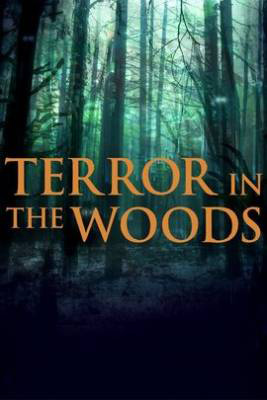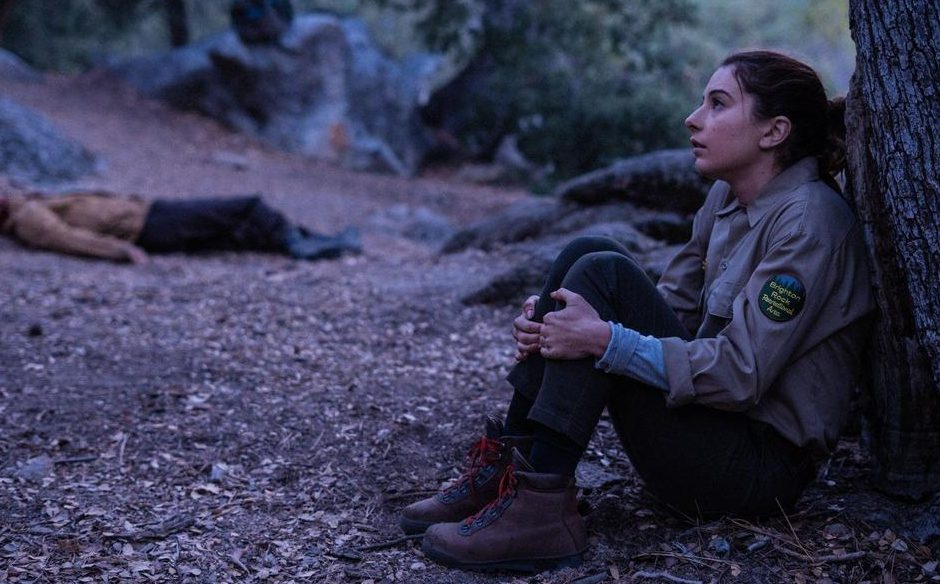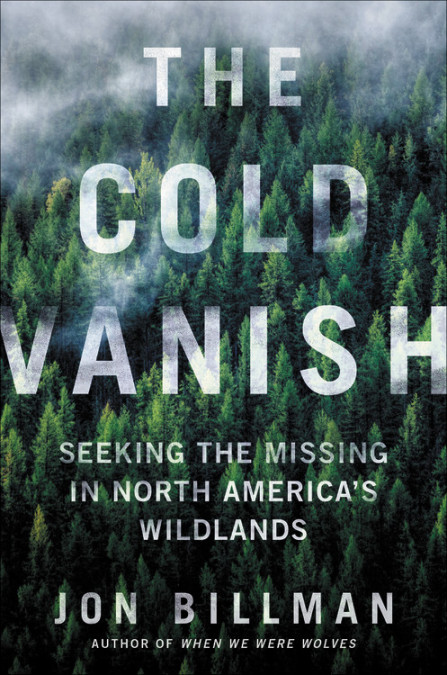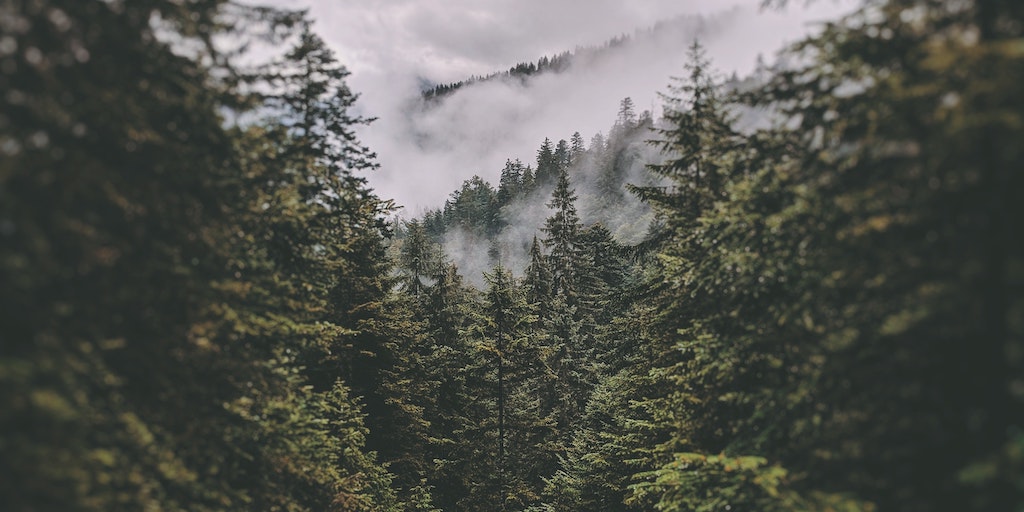“It’s very hard to get lost in America these days, and it’s even harder to stay lost. So, we’ve got that on our side.” Heather Donahue utters this statement in the cult classic The Blair Witch Project (1999).
Heather was so wrong. She, Mike, and Josh did get lost, and they’ve stayed lost for over twenty years. While The Blair Witch Project is a fictional cautionary tale about the dangers of the woods, there are also real accounts of very strange and very disturbing things happening among the trees.
According to The Cold Vanish by Jon Billman, the U.S. has 190 million acres of national forests, and they’re not regulated in the same ways as national parks. Come join us by the fire as we talk about the many frightening things—both fictional and true—that hide in these acres of woodland.
blank text
blank text
The Mysteries
Disembodied voices of missing persons. Sightings and sounds of unclassified creatures. Reports of other dimensions. There is no limit to the weirdness that permeates our big backyard, and these fictional and true stories highlight America’s paranormal problem.
When our fearless leader and Tor Nightfire site editor Emily Hughes encouraged me to check out a series of r/nosleep stories narrated by a Search and Rescue Ranger, she gave me no warning about the horror that I was about to experience. I am much less fearless than Emily, so if you are like me, please heed this warning: do not read the linked No Sleep thread on Reddit unless you’re prepared to deal with the psychological consequences; do not read the eight-part collection of SAR stories written by Kerry Hammond if you want camping and hiking to be enjoyable activities. The stories are fictional, but that makes them no less unnerving. They’re delivered with a casual, unembellished tone, so it’s easy to believe that these horrifying stories could be true. If you like the outdoors but have an active imagination, you might be better off not knowing the story about the hiker who climbs up a tree and is never seen again, or the numerous accounts of faceless people in the woods, or the reports of standalone staircases that only seem to lead to nowhere. [Editor’s note: I am always chasing the high of the Search and Rescue r/nosleep stories, so if you know of a book that reads like those stories, please @ me immediately.]

Terror in the Woods is a testament to the high strangeness that happens in our forests. This re-enactment show allows people to share their allegedly true stories about the frightening things that happened to them in the woods, and you know what? These tales make it clear that sometimes getting lost isn’t the worst thing that might happen to you in the woods. In these episodes, you’ll hear stories from everyday people who go to the woods to relax but instead are chased by creatures unbeknownst to zoology or haunted by entities. In one sitting, this show made me want to:
- Never take a road trip to North Carolina.
- Never spend a quiet weekend at an isolated cabin.
- Never go hiking or fishing.
I know, I know—sometimes these cheap shows have terrible special effects and laughable reenactments. But Terror in the Woods serves its basic purpose, which is to help you reconsider the advantages of urban dwelling.
The Murders
Getting lost is a legitimate fear for outdoorsy folks, but for horror enthusiasts, it’s also natural to fear the danger that other humans pose to our safety in the wild. Films like Friday the 13th and The Strangers have captured our fears of encountering dangerous people in the woods, but keep reading if you need more reasons to stay far away from other campers.
Mountains and wide-open plains. Bison and bears. Old Faithful. These are the images your brain conjures when you think about national parks like Yellowstone. These historic outdoor spaces may have paved roads and rangers, but they also have dark histories. Hosted by two friends who love the wild, National Park After Dark is described as a podcast for morbid outdoor enthusiasts. The hosts invite listeners to travel to America’s national parks to explore their histories and hear stories of murder, disappearances, and the paranormal (CW for some especially dark episodes that detail graphic violence and sexual assault). Go hiking, set up camp, and listen to the show, but whatever you do, don’t be a touron of Yellowstone!
The Missing
Have you ever wondered about how many people go missing in forests and national parks? You’re probably thinking the people who go missing are primarily city slickers, but that’s just not true. As Billman points out in The Cold Vanish, missing persons cases involve experienced runners, hikers, and even hunters.
Park guides can get lost in the woods, too. Body at Brighton Rock is a chilling story about Wendy, a young park guide who gets a little too distracted by the perfect playlist and dances her way right off the trail. But being lost in the woods isn’t even the scariest part of this flick. How about having to babysit a dead body until help arrives… in the morning? This film is best watched in the dark when you don’t have plans to venture beyond your backyard anytime soon. Darkness, getting lost, being watched—this flick will cater to all your fears about the woods. (And of course, the main character doesn’t have a map. Why would you even ask?)

The cases featured in the documentary Missing 411: The Hunted are tragic because they’re true, but they’re also frightening because they highlight the disappearances of the very people who are most unlikely to get lost in the woods—hunters. David Paulides, a retired police officer and director of the North America Bigfoot Search, has spent years researching Missing 411 cases, many of which appear to involve clusters of people who have vanished in forests and national parks, sometimes under strange circumstances. Paulides’ Missing 411 work has been met with skepticism by some, like data scientist Kyle Polich, who asserts that these cases, in fact, don’t contain strange anomalies. Whether or not you believe that something strange is happening in our forests and national parks, it’s still frightening to think that if highly responsible and experienced hunters can lose their way, then anyone can vanish—even you. So be prepared!

If you’ve already watched the documentary, you can read the bare-bones facts of more missing persons cases in Paulides’ Missing 411 book series.
Before we take a hike, allow me to draw your attention to the large numbers of Indigenous people, particularly women, who go missing every year. The even bigger mystery? The lack of media attention that these cases receive. In The Cold Vanish, Billman reports that Indigenous people make up 7 percent of Montana’s population but over 30 percent (!!!) of the state’s missing persons cases. This lack of media attention also extends to missing persons cases involving Black people and people of color. In 2019, ABC News reported that only 13 percent of the US population is Black, but Black people account for over 30 percent of all missing persons cases. Regardless of whether these disappearances occurred in the woods or in urban areas, I hope this post draws attention to struggles that Black people, Indigenous people, and people of color might face while searching for their lost loved ones.
The woods can certainly be a serene escape from urban life, but we horror fans know to expect the unexpected and proceed along the trail with extreme caution, because anything could be waiting at the end of that path—assuming you don’t get lost along the way.
Give me haunted houses, shadowy graveyards, or a dank, dark crypt, but do not leave me in the woods alone.



